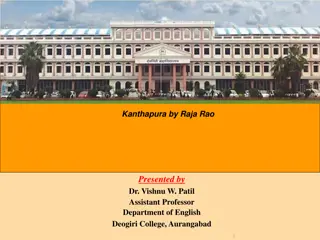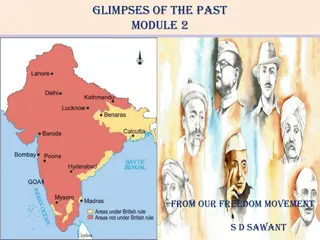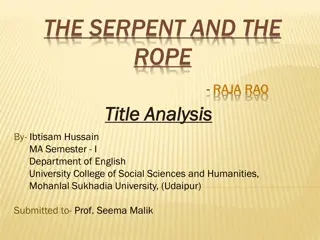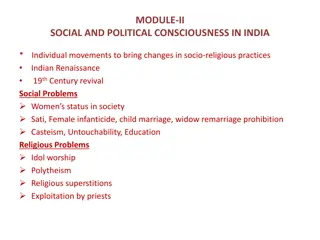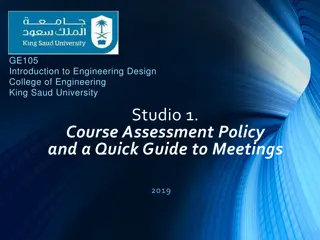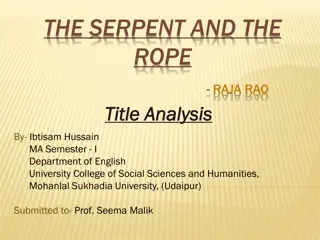
Neuropathic Pain: Grading, Phenotyping, and Taxonomy Considerations
Explore the updated grading system, phenotyping methods, and taxonomy considerations for neuropathic pain conditions. Gain insights into diagnostic criteria, common features, and shared pathophysiological mechanisms associated with acute neuropathic pain. Discover expert consensus on genetic studies and diagnostic certainty levels.
Download Presentation

Please find below an Image/Link to download the presentation.
The content on the website is provided AS IS for your information and personal use only. It may not be sold, licensed, or shared on other websites without obtaining consent from the author. If you encounter any issues during the download, it is possible that the publisher has removed the file from their server.
You are allowed to download the files provided on this website for personal or commercial use, subject to the condition that they are used lawfully. All files are the property of their respective owners.
The content on the website is provided AS IS for your information and personal use only. It may not be sold, licensed, or shared on other websites without obtaining consent from the author.
E N D
Presentation Transcript
ACUTE NEUROPATHIC PAIN SRINIVASA RAJA JOHNS HOPKINS MEDICINE
PAIN TAXONOMY CONSIDERATIONS AAPT DIAGNOSTIC CRITERIA: DIMENSIONS 1. Core Diagnostic Criteria Sx, Signs, Tests, Differential diagnosis 2. Common Features Life-span perspective, Epidemiology 3. Common Medical Comorbidities Medical, Psychiatric, Overlapping Pain conditions 4. Neurobiological, Psychosocial, Functional consequences Biologically Plausible Exhaustive Mutually exclusive Reliable Clinically useful Simple 5. Putative Mechanisms, Risk and Protective factors Psychosocial risks and predictors Fillingim RB et al. J Pain 15;241-49:2014 Dworkin RH et al. J Pain (Suppl.) 2016
ACUTE NEUROPATHIC PAIN: CONSIDERATIONS / DISCUSSION POINTS Is this a good bucket for an Acute Pain condition? Is the condition homogenous enough for taxonomy? Few conditions that will be useful to include in this bucket What are some of the inclusion/exclusion criterion used in studies using this condition? Usefulness of these conditions based on prevalence, clinical or research importance Do these conditions share some common pathophysiological mechanisms?
NEUROPATHIC PAIN: AN UPDATED GRADING SYSTEM Treede R-D et al Neurology 2008- Feb 2015- 414 citations, 316 use of the definition Leading complaint Paina History of relevant neurological lesion or diseaseb and Pain distribution neuroanatomically plausible No Unlikely to be neuropathic pain History Yes Possible Neuropathic Pain Pain is associated with sensory signs in the same neuroanatomically plausible distributionc Examination Yes Probable Neuropathic Pain Diagnostic test confirming neurological lesion or disease explaining the pain Confirmatory tests Yes Confirmed Neuropathic Paind Nanna B. Finnerup,*, Simon Haroutounian, Peter Kamerman, Ralf Baron, David L.H. Bennett, Didier Bouhassira, Giorgio Cruccu, Roy Freeman, Per Hansson, Turo Nurmikko, Srinivasa N. Raja, Andrew S.C. Rice, Jordi Serra, Blair H. Smith, Rolf-Detlef Treede, Troels S. Jensen Finnerup NB et al. Pain 2016 (in press)
NEUROPATHIC PAIN PHENOTYPING BY INTERNATIONAL CONSENSUS FOR GENETIC STUDIES A Delphi Survey of Experts Van Hecke O et al. Pain 2015;156:2337-53
NEUROPATHIC PAIN PHENOTYPING LEVEL OF DIAGNOSTIC CERTAINTY A Delphi Survey and Consensus of panel of Experts Van Hecke O et al. Pain 2015;156:2337-53
NEUROPATHIC PAIN: QUESTIONNAIRES AND SCALES Comparison of Neuropathic Pain Screening Tools Items LANSS painDETECT Symptoms Pricking, tingling pin and needles Electric shocks or shooting Hot or burning Numbness Pain evoked by light touching Painful cold or freezing pain Pain evoked by mild pressure Pain evoked by heat or cold Pain evoked by changes in weather Pain limited to joints Itching Temporal patterns Body map spatial distribution of pain Autonomic changes Signs Brush allodynia Raised soft touch threshold Raised pin prick threshold *Highlight items shared by two or more tools. Screening tools that involve clinical examination of NP signs. Used to identify non-neuropathic pain. DN4 NPQ ID Pain * * * * * * * * * * * * * * * * * * * * * * * * * * * * * Mulvey MR. et al Pain Management 2014 : 4; 233-243
ACUTE NEUROPATHIC PAIN Acute Pain caused by a lesion or disease of the somatosensory nervous system. May be the result of injury or disease that involves one or more peripheral or cranial nerves, plexus, roots, DRG, spinal nerves, spinal cord, or brain. Etiology and disease mechanisms varied. Acute Peripheral Neuropathic Pain SYSTEM Acute Central Neuropathic Pain
ACUTE NEUROPATHIC PAIN DIMENSIONS 1. Core Diagnostic criteria: NeuPSIG/IASP definition of NP associated with injury/disease of duration days-weeks (EVENT) Common Features: Well described (QUALITY/TEMPORAL/SPATIAL) Common Medical Comorbidities: etiology dependent (Immune status, Ageing, Vascular insufficiency, Diabetes ..) (HOST) Neurobiological, Psychosocial, Functional consequences: Common, QOL impairment greater compared to non-NP, Functional consequences variable depending on etiology (IMPACT/FUNCTION) Putative Mechanisms, Risk and Protective factors: ectopic activity, peripheral and central sensitization, neurogenic inflammation, descending inhibition (PATHOPHYSIOL/PUTATIVE MECHANISMS) 2. 3. 4. 5. Smith BH et al. Clinical Journal of Pain 2007 23 143 149 Doth AH et al. Pain 2010 149 338-44
ACUTE PERIPHERAL NEUROPATHIC PAIN: POSSIBLE ETIOLOGIC SUBGROUPS Acute neuropathic pain in infectious disease: e.g., Zoster, HIV, leprosy Acute painful radiculopathy: e.g., nerve root compression due to disc disease Acute post-nerve injury neuropathic pain: e.g, CRPS 2 (Causalgia) Acute post-amputation neuropathic pain- phantom and residual limb pain Acute trigeminal neuralgia Acute toxic neuropathic pain: Chemotherapy-induced NP
ACUTE NP IN INFECTIOUS DISEASE: ZOSTER-ASSOCIATED NP 1. CORE DIAGNOSTIC CRITERIA History: Pain: Unilateral distribution, 1 or more spinal dermatomes, or V1 distribution Spontaneous or evoked (allodynia, hyperalgesia) pains Temporal relation to zoster rash Zoster sine herpete? Examination Negative (hypesthesia) and/or positive sensory signs (allodynia, hyperalgesia) Confirmatory Tests (not essential) QST?, may be helpful in sub-classificatin Differential diagnosis Dworkin RH et al. J Pain (Suppl.) 2016 Finnerup NB et al. Pain 2016 (in press);
ACUTE ZOSTER-ASSOCIATED NP 2. Common Features (Epidemiology)- well characterized 3. Common Medical Comorbidities: Ageing, stress and decreased immune status, HIV, Cancer 4. Neurobiological, Psychosocial, Functional consequences Quality of life, social interaction, vision disturbance (trigeminal) 5. Putative Mechanisms, Risk and Protective factors DRG cell injury/inflammation due to viral reactivation Age, extent of rash, anti-viral therapy, Dworkin RH et al. J Pain (Suppl.) 2016 Finnerup NB et al. Pain 2016 (in press);
ACUTE PAINFUL RADICULOPATHY: 1. CORE DIAGNOSTIC CRITERIA History: Painradiating from neck or lower back to the extremities; distribution in the innervation territory of one or more nerve roots (unilateral vs bilateral?), onset and duration- <30 days (< 12 wk??); lancinating, stabbing, or electric quality Examination: positive straight leg test (Las gue's sign- sensitivity 91%, specificity-26%), contralateral straight leg raising (sensitivity 29%, specificity 88%), between 30-700 (??) Confirmatory Tests: Encroachment of disc material on spinal nerve root confirmed by MRI or CT Differential diagnosis Exclusion- cauda equina syndrome; paralysing sciatica, sciatica due to tumour
ACUTE PAINFUL RADICULOPATHY 2. Common Features (Epidemiology) 3. Common Medical Comorbidities Obesity 4. Neurobiological, Psychosocial, Functional consequences Variable dependent on occupation and age 5. Putative Mechanisms, Risk and Protective factors (Psychosocial risks and predictors) Risks: Obesity, Occupation, Trauma Mechanisms: Cytokines released by disc material ??
ACUTE POSTAMPUTATION NEUROPATHIC PAIN: 1. CORE DIAGNOSTIC CRITERIA History: Pain: Distribution in the missing body part or residual limb Onset: 75% within 1 wk, 50% within 24 hr Nature: Varying frequency and intensity; shooting, shocking, burning, cramping, aching, dysesthetic; exacerbation by cold and weather changes Examination Pain induced by palpation of stump (neuroma?); Tinel s sign Confirmatory Tests Imaging, EMG/NCV not essential Differential diagnosis Ischemia, infection, osteomyelitis, ectopic ossification
ACUTE POST-AMPUTATION NP: RESIDUAL LIMB AND PHANTOM PAIN 2. Common Features (Epidemiology) 40-80% depending on etiology, site, patient population? 3. Common Medical Comorbidities In elderly, peripheral vascular disease and/or diabetes 4. Neurobiological, Psychosocial, Functional consequences Impairment, disability, stress, anxiety, depression; Higher risk for obesity, chronic joint and low back pain, sleep disorders 5. Putative Mechanisms, Risk and Protective factors Pre-amputation pain?, phantom sensation, stump pain Risk factors: Diabetes, PVD, trauma Mechanisms: Peripheral (ectopic activity), Central (cortical and sub-cortical reorganization), and Psychological factors (stress, depression, catastrophizing?) Prevention: perioperative neural blockade?,surgical techniques? Finnerup NB et al. Pain 2016 (in press) Dworkin RH et al. J Pain (Suppl.) 2016 Luo Y, Anderson TA. Int Anesth Clin 54;121, 2016
ACUTE POST-NERVE INJURY NEUROPATHIC PAIN: 1. CORE DIAGNOSTIC CRITERIA History: Distribution in the innervation territory of lesioned nerve, usually distal to site of trauma, surgery, or compression Examination Sensory loss in the distribution of affected nerve, allodynia and/or hyperalgesia Confirmatory Tests NCV/EMG (time after injury?)
ACUTE TOXIC NEUROPATHIC PAIN: 1. CORE DIAGNOSTIC CRITERIA History: Pain distribution: Pain triggered by cold, tingling, pins and needles in distal exteremities Shooting, burning Onset: within 1 month of chemoRx Examination Sensory loss numbness) Confirmatory Tests NCV / EMG
ACUTE CENTRAL NEUROPATHIC PAIN Spinal cord injury-associated Acute Neuropathic Pain Common in younger age group, at level or below level of SCI, 34-94% of SCI patients Post-stroke Acute Neuropathic Pain More common in elderly, 10-55% of stroke victims Acute post-traumatic central neuropathic pain Plexus Avulsion injuries Concussion / Brain injury Acute Central NP associated with neurological diseases Multiple sclerosis? Rintala DH et al. Arch Phys Med Rehabil 1998;79(6):604 14 Harrison RA et al. Cerebrovasc Dis 2015;39(3-4):190 201
SPINAL CORD INJURY ACUTE NEUROPATHIC PAIN: 1. CORE DIAGNOSTIC CRITERIA History: Pain distribution: at and or below the level of spinal cord lesion Onset days to weeks after injury Spontaneous or evoked dysesthesia, hyperesthesia, or paresthesia Examination Sensory and motor deficits depending on injury site and extent Associated autonomic dysfunction Confirmatory Tests CT, MRI Finnerup NB. Pain 2013;154 Suppl :S71 6 Bryce TN et al. Spinal Cord 2012 ;50(6):404 12
POST-STROKE ACUTE NEUROPATHIC PAIN: 1. CORE DIAGNOSTIC CRITERIA History: Temporal relationship to a stroke Pain distribution: contralateral to lesion side, can also involve ipsilateral face Examination Sensory and motor deficits, hypertonicity and exaggerated reflexes Associated bowel and bladder dysfunction Confirmatory Tests CT, MRI, Vascular studies
ACUTE NEUROPATHIC PAIN TAXONOMY Acute Pain Event: Onset / Duration Etiology / Mechanism Acute Neuropathic Pain Acute Peripheral Neuropathic Pain Acute Central Neuropathic Pain System: Site of Pathology/Disease Acute NP in infectious disease Spinal cord injury-associated Acute NP Acute painful radiculopathy Post-stroke Acute NP Acute post-nerve injury NP Acute post-traumatic central NP Acute post-amputation NP Other neurologic disorders Acute trigeminal neuralgia Acute toxic NP
FUTURE STUDIES When does acute NP transition to chronic NP? What factors predict the transition to chronic NP Is the mechanism of acute NP different from chronic NP? Are therapies for chronic NP equally effective in acute NP? Test Validity of diagnostic criteria Relative validity- NeuPSIG criteria as the standard? Test Reliability of diagnostic criteria Inter-Rater Test-Retest







